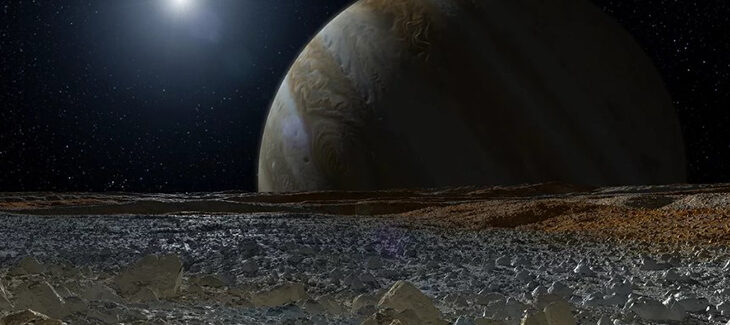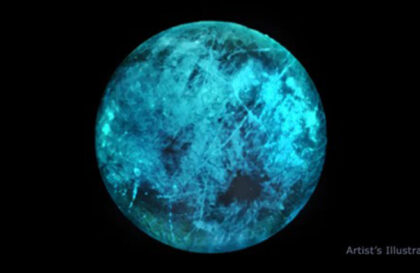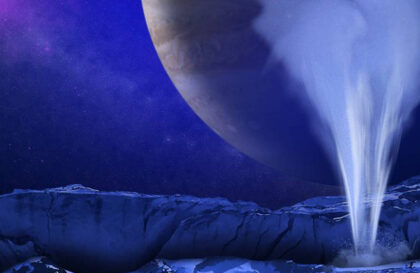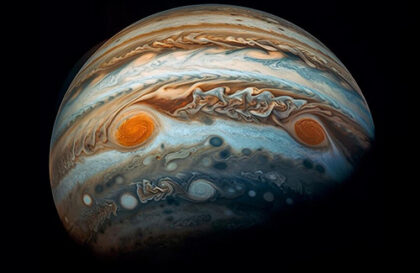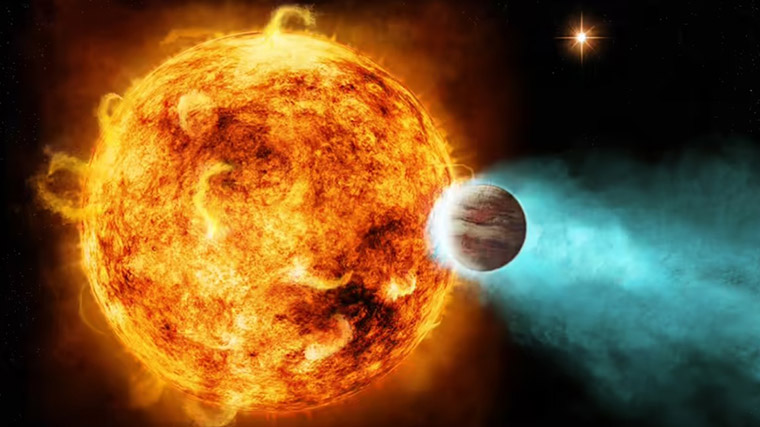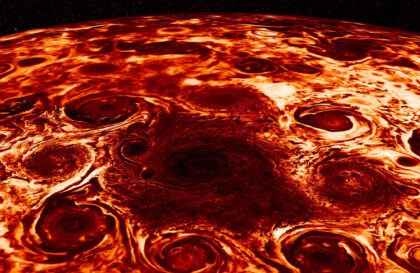of Jupiter as seen from the surface of its icy moon Europa. (Image credit: NASA/JPL-Caltech)
The James Webb Space Telescope has identified carbon dioxide emanating from salty water oceans beneath the icy surface of Jupiter’s moon Europa.
Scientists have long known about the existence of an ocean beneath the Europa ice sheet. Previously, data from the Hubble telescope showed the presence of salts from the ocean in the Tara Reggio area. But nothing was known about the ocean’s chemistry and the possible existence of life.
The earth’s biosphere values chemical diversity, and the greater the variety, the more favorable the conditions for life. Our lives are based on carbon, and knowing Europa’s chemical composition can give us insight into the moon’s potential habitability. Carbon is a vital element of living things. And it was discovered on Europa.
The observations took James Webb only a few minutes.
Carbon on Europe of local origin
JWST detected the presence of carbon dioxide near Europa, the smaller Jupiter’s four Galilean moons, only in a relatively young geological zone called Tara Reggio. In this area, also called the “region of chaos,” the surface ice cover’s destruction occurs. This detail indicates an active exchange between the surface layer and the waters of Europa.
Credit: 7enews
Another intriguing detail is that the researchers could rely on infrared data from the James Webb Space Telescope’s NIRSpec instrument to study that the ice breakup in the Thar region was not due to external sources such as meteorite bombardments.
These observations showed us that the carbon found on Europa’s surface comes directly from its groundwater.
James Webb doesn’t see plumes
Another team used JWST to search for plumes of material escaping from Europa’s surface. But the powerful space telescope failed to see anything.
Credits: NASA’s Goddard Space Flight Center
The plumes were tentatively detected in 2013, 2016, and 2017, and the fact that JWST could not confirm their existence does not mean they are not around Europe.
A few minutes of observation may not have coincided with the appearance of the plumes. These loops may be variable. You can only see them at certain times.
What’s next?
James Webb also proved effective for working in the solar system. A few minutes of observation gave good first results on Jupiter’s satellite.
Credit: NASA GSFC/CIL/Adriana Manrique Gutierrez
The results could have implications for upcoming missions, particularly the Europa Clipper mission, which NASA will launch in October 2024 to explore Europa and the possibility of supporting life in its underground oceans.
They could also serve as a resource for ESA’s Jupiter Ice Moon Explorer (JUICE) mission, launched in 2023—this mission aimed to study Europa, Callisto, and Ganymede, the known oceans, and Jupiter itself.
Banner image: An artist’s depiction of Jupiter as seen from the surface of its icy moon Europa. (Image credit: NASA/JPL-Caltech)
Image credit:
https://www.nasa.gov
https://7enews.net
https://www.space.com
https://solarsystem.nasa.gov
